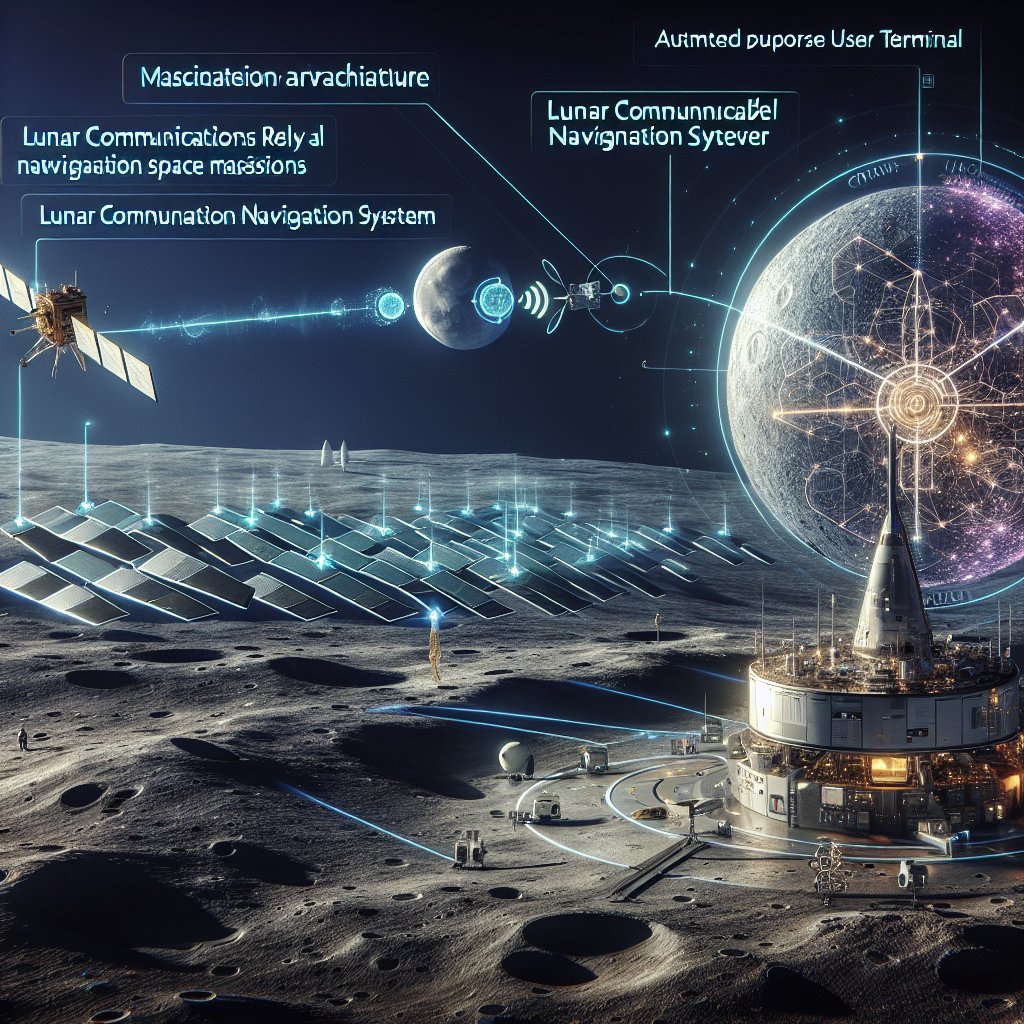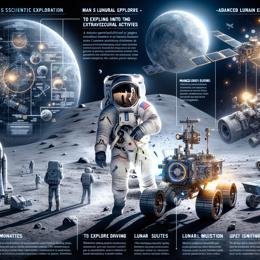Image created by AI
NASA Seeks Innovation through NextSTEP-2 for Future Lunar Communications
NASA has taken a significant step towards establishing a sustainable communication and navigation architecture for its future lunar missions. This bold initiative comes through the solicitation of new studies and demonstrations under the Next Space Technologies for Exploration Partnerships-2 (NextSTEP-2) Broad Agency Announcement (BAA). These efforts will ultimately provide a more extensive and resilient infrastructure enabling space mission users to have a seamless communication experience as they operate between various networks in space and on the ground.
The agency's Commercialization, Innovation, and Synergies (CIS) Office is spearheading this pursuit by selecting innovative solutions capable of meeting the rigorous demands of lunar surface operations. One specific focus is the development of dual-purpose user terminals designed for the lunar surface. These state-of-the-art terminals must not only satisfy the government's precise technical specifications but also ensure compatibility with the burgeoning LunaNet and the Lunar Communications Relay and Navigation System (LCRNS) standards.
In its continuous search for groundbreaking solutions, NASA has delineated requirements for a LunaNet Augmented Forward Signal (AFS) navigation receiver and communications transceiver capabilities. Ideally, a combined communications and position, navigation, and timing (CPNT) system meeting the full suite of requirements will be the prize-winning acquisition to support NASA's lunar surface exploration endeavors.
Moreover, NASA is on the lookout for advanced studies and demonstrations concentrated on Network Orchestration and Management Systems (NOMS). These innovative systems are expected to manage and coordinate a globally distributed network of Satellite Ground Systems that are integral to the Near Space Network (NSN)'s support structure.
Such forward-thinking studies underscore NASA's commitment to advancing its space communication, exploration technologies, arrangements, and abilities. The long-term objective is to seamlessly transition to a commercialized communication service network that catifies to near-Earth space users, with NASA becoming one amongst many clients.
The question of why NASA doesn't merely partner with SpaceX and Starlink arises frequently in public discussions. While NASA does engage with various commercial partners, including SpaceX, the task at hand requires specialized solutions that may not always align with existing commercial products. Furthermore, the adherence to government specifications and the integration of unique lunar navigation systems like LunaNet and LCRNS can necessitate custom-built technologies. Collaboration with a variety of industry partners under NextSTEP-2 encourages diverse innovative approaches, which can result in more robust and tailor-made solutions for NASA's lunar exploration missions.
With the ongoing development and augmentation of its communications and navigation infrastructure, NASA continues to navigate the unknown, innovate for the betterment of humankind, and inspire the world through its journey of discovery into space.










